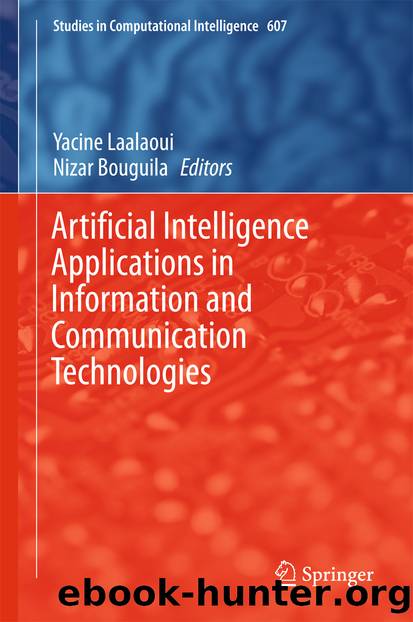Artificial Intelligence Applications in Information and Communication Technologies by Yacine Laalaoui & Nizar Bouguila

Author:Yacine Laalaoui & Nizar Bouguila
Language: eng
Format: epub
Publisher: Springer International Publishing, Cham
Keywords
Mental searchImage retrievalBayesian modelsGeneralized inverted dirichletMixture models
1 Introduction
New technological achievements during the recent years caused the appearance of large data collections that are complex to represent, analyze and search. The amount of information that could be derived from such collections can vary depending on the purpose, context and intention of the users dealing with them. Therefore, many systems adopt query-based structures in order to satisfy context-aware needs from a given data collection [20]. In many real life situations, a search problem occurs naturally when a human being is interested in one or several concepts that exist within a certain amount of data. Such concepts could be visual, textual, or within any other information container that is usually represented by the system in a well defined feature space. A common application of such search processes comes with the recommendation frameworks where the system uses different feed backs from users in order to suggest them what could be categorized as “interesting items” [21, 27]. Some other systems collect data about the users behaviors, then search and suggest advertising items for commercial purposes [14, 16]. In many cases, a user is intentionally searching an item but has no clue about the features that a system is using to represent a concept, or lacks the needed tools and semantics to describe his/her needs and express them. Thus, he/she cannot provide a precise query to the system in order to tune the search process. We refer to this problem as the semantic gap between the user and the system. In order to solve such a problem, some works have proposed a mental matching which consists of a search process during which the system tries to identify the mental target of a given user without having an explicit query. An overview about mental matching can be found in [11] where the authors track the early works on this field and propose a new bayesian framework to search an image category based on a mental image. They mainly design a system where several images are displayed to a user, and he/she has to select the image that appears to be the closest to the image he/she has in mind, until the system shows a target image. In this paper, we propose to extend the work of [11] which has the advantage of being query-free, in order to (1) cover multi targets category search, (2) include the possibility of a multiple images selection and a no preference choice when looking for a target category during the search process, and (3) use a new data model that serves to model the data and to measure similarities between different images using the generalized inverted Dirichlet distribution [4, 19].
This paper is structured as follows. In Sect. 2 we present the problem and the techniques that have been proposed to solve it, as well as the main contributions of this work. The proposed framework is introduced in Sect. 3. In Sects. 4, 5, 6 and 7, we detail the Data Model, Update Model, Answer Model and Display Model, respectively.
Download
This site does not store any files on its server. We only index and link to content provided by other sites. Please contact the content providers to delete copyright contents if any and email us, we'll remove relevant links or contents immediately.
Algorithms of the Intelligent Web by Haralambos Marmanis;Dmitry Babenko(8519)
Test-Driven Development with Java by Alan Mellor(7354)
Data Augmentation with Python by Duc Haba(7253)
Principles of Data Fabric by Sonia Mezzetta(6997)
Learn Blender Simulations the Right Way by Stephen Pearson(6934)
Microservices with Spring Boot 3 and Spring Cloud by Magnus Larsson(6765)
RPA Solution Architect's Handbook by Sachin Sahgal(6170)
Hadoop in Practice by Alex Holmes(6028)
The Infinite Retina by Robert Scoble Irena Cronin(5870)
Jquery UI in Action : Master the concepts Of Jquery UI: A Step By Step Approach by ANMOL GOYAL(5869)
Big Data Analysis with Python by Ivan Marin(5694)
Life 3.0: Being Human in the Age of Artificial Intelligence by Tegmark Max(5398)
Pretrain Vision and Large Language Models in Python by Emily Webber(4654)
Infrastructure as Code for Beginners by Russ McKendrick(4439)
WordPress Plugin Development Cookbook by Yannick Lefebvre(4168)
Functional Programming in JavaScript by Mantyla Dan(4121)
The Age of Surveillance Capitalism by Shoshana Zuboff(4111)
Embracing Microservices Design by Ovais Mehboob Ahmed Khan Nabil Siddiqui and Timothy Oleson(3959)
Applied Machine Learning for Healthcare and Life Sciences Using AWS by Ujjwal Ratan(3931)
